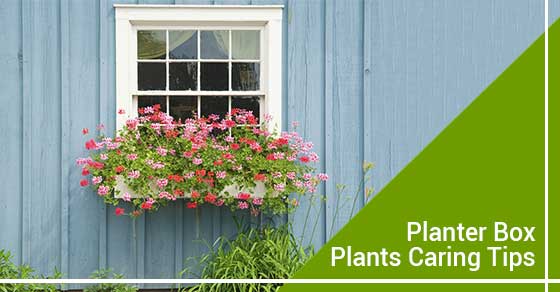Many plants can be grown in containers for their entire lives. There are many reasons why you may opt to plant in a container as opposed to directly on the ground, such as the ability to move a planter box around depending on the weather and position of the sun, or depending on its stage of growth bloom or post-bloom. You can also grow acid-loving plants in areas of alkaline soil and vice versa.
However, plants grown in planters or pots tend to be more dependent on you for their nutrition and water requirements. Consider that their roots cannot grow beyond the planter box, so you have to make all nutrients and water available in that space.
Here are some tips to help you take better care of your plants in planter boxes:
- Choose a large boxPlants need space to grow both upwards and downwards—preferably in soil that holds moisture well. Depending on the plant you want to grow, the planter box should be a minimum of eight inches wide to allow sufficient room for top growth and at least eight inches deep for the roots to grow downwards.
- Puncture drainage holes in the bottomMake sure that your container has one or more holes in the bottom to allow free movement of water. Poor drainage combined with overwatering can drown the plant roots, resulting in premature death for your plant. Buy potting soil from your local garden centre, as opposed to using soil from the garden that may be filled with weed seed, fungal diseases, and insects.
- Pay attention to the position of the sunMost plants grow best in full sunlight, but that’s not true of all plants. So, move your plant to a sunny, shady, or partially shady spot depending on its needs. For portability, consider lightweight materials like resin, plastic, and fiberglass. Unlike wood or unglazed clay, these materials are not porous, which means that they leave more moisture in the soil for the plant. This is particularly important for plants placed in direct sunlight to keep them from getting scorched.
- Water and fertilize your plant regularlyTo determine when to water your plant, stick your finger about two inches down into the soil. If it’s dry, water the plant thoroughly. Unfortunately, the more you water the plant the more the nutrients are leached. So, create a regular feeding program, depending on the needs of your plants, for every few weeks.
Generally, taking good care of your plants means providing them with sufficient water, food, light, air, and shelter—the basic requirements of growth. It also means protecting them from insects, pests, and harsh weather that may cause diseases, by using pesticides and fungicides.




